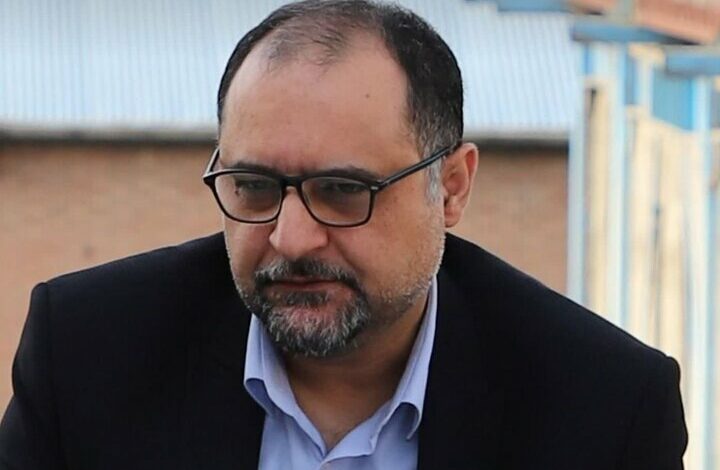The emergence of a new power in the world food trade market

report Mehr reporter, on the occasion of holding talks between the joint chambers of Iran, Brazil and Latin America on the topic of food security, Hossein Shirzad, an analyst of agricultural development, wrote in a special note for Mehr;
A balance between food diplomacy, water diplomacy, space-based self-sufficiency (not resource-based) and flexible management Value chains will be the core of Iran’s food security strategy in the next decade in order to manage diverse and multiple risks of food imports, which are ultimately out of control, while relying on national production capabilities, in compliance with environmental regulations and management. slow down This “problematic” could require strengthening food logistics, cooperation in regional and global multilateral institutions and agreements to make the food security system more flexible and responsive to the interests of food importers. Maintaining the multilateral food trade system and avoiding the kinds of export restrictions that have occurred during the global food crisis in recent years are urgent requirements.
Currently, Turkey, Afghanistan, Iraq, Azerbaijan are among the countries that compete with Iran to provide reliable water resources and sustainable nutritional needs of their population. It leads to increased geopolitical frictions, putting regions with water or healthy food surpluses at a distinct advantage. Even supply chain shortages and disruptions cause geopolitical developments. Growing nutritious food will also become increasingly challenging due to climate disturbances.
We live in a world where we are currently facing the reduction of arable land and the effects of climate change. For example, land degradation has already reduced the productivity of 23% of the world’s agricultural land, and more than $577 billion of annual agricultural production is at risk of being lost to pollinators. Global food production is expected to grow 8% less with climate change. It is also expected that the yield of fruits and vegetables will decrease by 6% under the climate change scenario.
One of the main issues is whether food can be successfully weaponized as a hybrid tool for expanding influence and gaining allies. Therefore, what matters is not how geopolitics affects food security, but how food security affects geopolitics. Will this be the so-called “Global North” versus “Global South” confrontation? Or will such simplification not be enough, as geopolitical tensions push us towards more diverse supply chains, more investment in local production, and the development of new international rules and mechanisms?
Emergence of a new power in providing world food security
Undoubtedly in the future, challenges related to climate-induced supply chain disruptions and malnutrition will lead to increased unrest and geopolitical instability. As during the pandemic, we saw that countries hoarded food resources and limited or stopped their exports to fight food inflation, pricing, ignoring long-term trade agreements and threatening geopolitical alliances. Since the pandemic, global supply chains have fluctuated as a result of changing international relations; The return of Trump, the trade war between the United States and China, the war between Russia and Ukraine and the renewal of hostilities between the usurper Israel and Hamas and the conflicts in Lebanon and Syria and the presence of ISIS in Iraq, the issue of the Houthis and the suffering of the Taliban in Afghanistan, a combination of these factors – the migrant crisis, Malnutrition and supply chain disruptions from worsening climate change – creating an urgent need for more secure food supplies in an increasingly volatile political situation. On the other hand, poor governance has a negative effect on the capacity of countries for an appropriate political response and response to periodic food crises.
Meanwhile, the relationship with Latin America is considered to be an effective factor in moderating seasonal food crises. With its potential for mass production, established trade relations with the world’s largest economies, and a strong source of labor, Latin America plays a key role in addressing the world’s food shortages. But at this point in time, Latin America is uniquely advancing its position as a global supplier of meat, forage, fruit and vegetables. This region is currently an industrial agricultural superpower that accounts for about a quarter of the global export of agricultural and fishery products. This region has the most available agricultural land and water per capita, and with only 15% of the land area, it receives 29% of global rainfall and 33% of renewable resources. > has global availability. It also stores 40% of the world’s fresh water. For Latin America, with a total workforce of over 300 million people, everything is in place to catapult the region’s growing capacity.
Based on Latin American data and historical world production and export performance from 2010 to 2020 and until 2050, Latin America can produce 2 out of every 5 fruits and vegetables. 3. To supply fruits globally. In this region, there is both production capacity and geopolitical advantage.
Many of the fruits and vegetables that the Middle East region produces are exported to other geopolitically important markets, including the United States, the European Union, and China. In fact, more than 60% of all Mexican production is exported to the United States. In other words, in a world of overpopulation and food insecurity, Latin America now serves as a fruit basket for the world’s most powerful trading partners. Latin America has no special allegiance, pact, or favor with any of the major economies currently vying for global dominance. In other words, Latin America is a safe and reliable partner that has no interest and ability to start international wars. Now, if this neutrality is managed well, it will create bargaining power and a wider opportunity to use the dependence of the world’s largest economies on Latin America in the field of geopolitics.
In the real world In a world challenged to meet the growing food needs of its people, Latin America is very well positioned; In addition, many Latin American countries have an urgent need for urea fertilizer. Also, they know a good level of English conversation; Another feature that enables them to easily tap into international markets. Of course, the next few years are critical for Latin America to establish itself as a major supplier of food to the world. The region must continue to increase its capacity to feed the world with nutritious food by investing in infrastructure, increasing access to technology and knowledge throughout the region, increasing financial sustainability for manufacturing businesses, and raising global awareness of the potential of Latin American agriculture. /p>
Latin America continues to maintain strong but neutral trade relations with the world’s largest economies. National governments across the region can facilitate continued business growth by implementing policies that create greater transparency and efficiency by replacing uncertainty with market predictability and stability. With its vast potential for agricultural production, deep trade ties with the world’s largest economic powers, and its emerging status as a global supplier of nutritious food, Latin America plays a vital role in feeding the world. By doing this, the region has the potential to increase its geopolitical connection and increase the welfare of the region and its people.
Latin America is at the forefront of fighting food insecurity
In the next decade, Iran is facing important challenges in providing basic goods, animal feed and sustainable food for its growing population. The crisis in the plains, the negative growth of investment, the depreciation of infrastructure, drought and malnutrition, and disruptions in the supply chain caused by climate change, have created an urgent need to provide food from reliable sources, which is due to geopolitical instability in the region. The Middle East has accelerated.
Today, Latin America is strategically at the forefront of the world to deal with food shortages, and the 3 critical elements are huge production potential, a neutral geopolitical location, and a strong labor pool. presents in his womb; Now, in parallel with the urgent need for urea fertilizer, the country’s ability to produce this product, what can we do in the Caribbean to take advantage of these cross-border advantages? The ideal solution will be to preserve and strengthen the world trade system based on multilateral rules and the international monetary system.
How Iran’s trade with Latin America is realized
Strengthening the trade system requires the revival of the WTO dispute settlement mechanism and its membership. It also requires further progress in dealing with national security subsidies and trade restrictions and the development of international rules and norms on the appropriate use and design of agricultural policies. In order to strengthen the international monetary system, concerted efforts are needed to become members of Palermo and FATF and prevent fragmentation of the global payment system and related standards and regulations.
We must also ensure a well-resourced and efficient global financial safety net, measuring and monitoring the flows of “improve cross-bordercryptos” and sustain a global conversation about restoring water, food, and energy resources. Therefore, we need practical steps to rebuild trust.
The second pragmatic step is to work together in areas of common interest. Take, for example, water and climate change. Recently, more than 70 countries have come together through the WTO’s trade structure and environmental stability discussions to identify opportunities to promote trade in renewable energy goods and services and witness progress in services and Be a digital business. Policy constraints in these areas are high with the rapid growth of the global economy. But recognizing this, 90 countries representing more than 90 percent of global trade are working together toward common digital trade rules, and 71 members have come together around a WTO multilateral agreement on domestic regulation of services that aims to promote regulatory frameworks. It is more transparent, predictable and efficient, and is expected to reduce the costs of trade in services by $127 billion.
Non-aligned countries, including Iran, can also use the potential of membership in the BRICS regional agreements. Shanghai, Eurasia and their economic and diplomatic power should play a bigger role for their food security and the world.
Global food security is currently in a state of “multidimensional crisis”, but crises also present opportunities. Recent geopolitical developments have shown the flaws of the conventional (as mainstream) food security model as well as the benefits of an alternative and integrated paradigm. The first pattern; It is a “techno-capitalist” model of industrialization and commercialization of agriculture, designed by large agricultural corporations and widely shared and disseminated by major international financial and development organizations, the international network of agricultural research institutions, and increasingly by national governments.
Another model is a bottom-up model developed by private SMEs, small farmers’ cooperatives, social organizations, grassroots organizations, and researchers working at the grassroots level. They work locally and it is based on trade in common borders with neighbors (16 countries). This concept of food sovereignty is both a critique of the top-down model and an alternative to it. The former model has dominated intensive cultivation and agricultural product development since the 1950s. This has increased global production at significant environmental, economic, social and health costs, especially at local levels, but has failed to ensure reliable food security. The recent model under regenerative agriculture provides the majority of the world’s food on a much smaller area of land, using fewer resources, with much less government and institutional support, and with much less environmental impact, but neither of these two models can exclusively prescribe a strategy for The Middle East is not a fragile agricultural ecosystem, and a new doctrine for Iran’s food security should be sought immediately.


